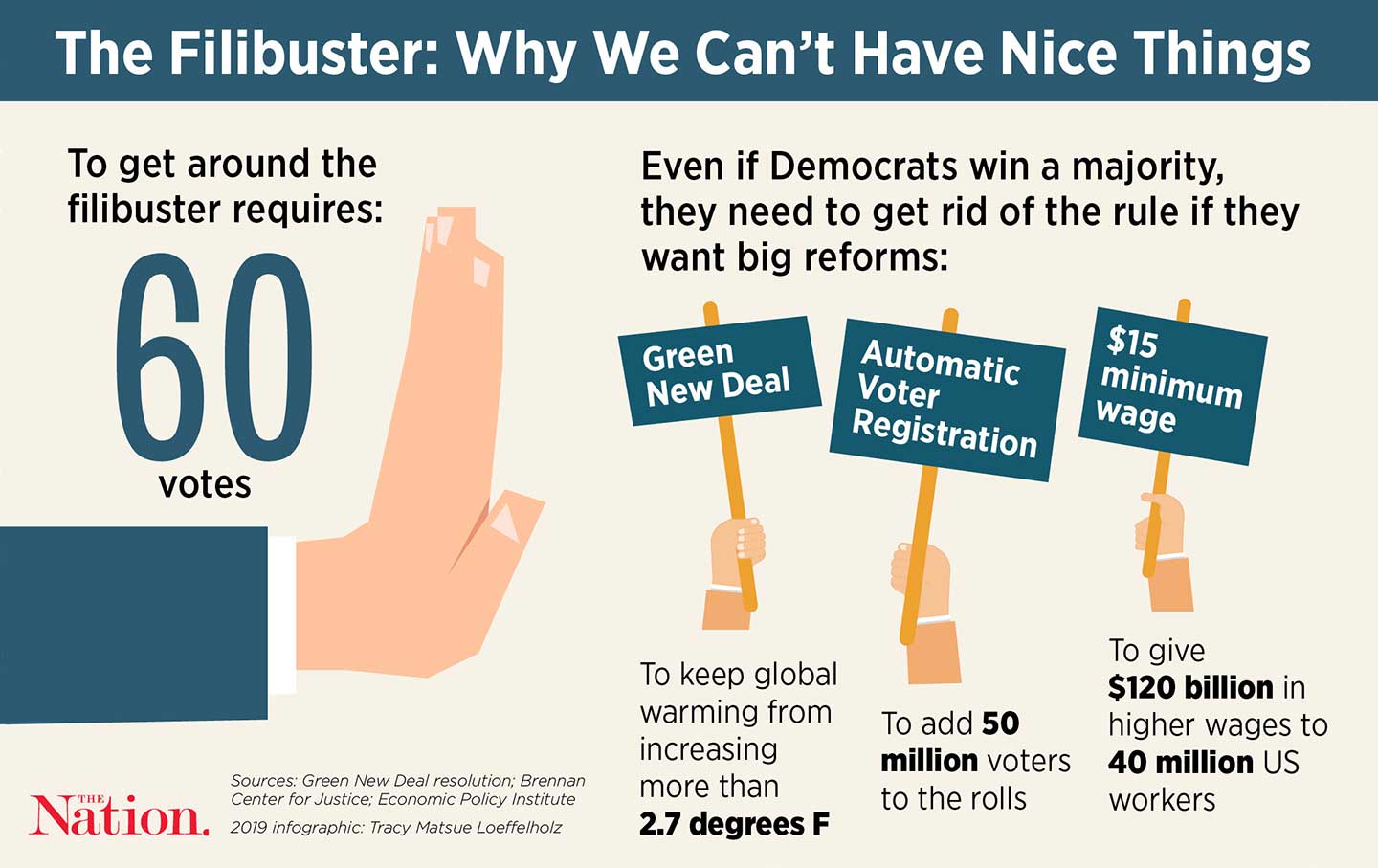Will the Filibuster Kill the Minimum Wage?

Back in late February, the Senate Parliamentarian’s ruling that a $15 minimum wage couldn’t be included among the budget reconciliation package that became the American Rescue Plan seemed to nail the lid shut on the coffin of the minimum wage. If the minimum wage (and by extension, any regulatory initiative) can’t be included in budget reconciliation measures, and if there aren’t 10 Republican votes for any Democratic initiative (which seems fairly likely, given recent behavior), then this would seem to confirm that the Federal minimum wage is essentially a dead letter in American labor law.
Even before the Senate Parliamentarian’s ruling, after all, activists and scholars had noted that the time between minimum wage bills had begun to grow, such that it took more than a decade to get from the Minimum Wage Increase Act of 1996 to the Fair Minimum Wage Act of 2007, and then more than a decade had passed between that latter bill and the present day. Given inflation’s undertow effect on the nominal Federal minimum wage, this guaranteed that the Federal minimum wage would lose value over time without any vote being taken to affirmatively cut it (one of the most central institutional features shaping the long-term history of the minimum wage).
In response, activists increasingly (and effectively) began shifting their efforts to the state level, such that 29 states and many more localities have a higher minimum wage than the Federal level. Seattle, Washington D.C, New York City, California, Massachusetts, Maryland, New Jersey, Illinois, Connecticut, and Florida are all slated to achieve a $15/hour minimum wage before Federal legislation would achieve that long sought-after goal. Thus, the Fight for Fifteen movement seems to have confirmed the strategic insight of the living wage movement that the state and local level is where reform can best be achieved, given Federal gridlock imposed by the filibuster.
And yet, we’ve been seeing sporadic interest in some form of bipartisan compromise on the minimum wage in the U.S Senate. Most recently:
Sens. Mitt Romney (R-Utah) and Kyrsten Sinema (D-Ariz.) are drafting bipartisan legislation to increase the minimum wage, Romney confirmed to HuffPost on Wednesday.
“We’re negotiating a minimum wage proposal which we would ultimately take to our group of 20 and see how they would react to it and go from there,” Romney said, referring to a bipartisan group of 20 senators who are hoping to find ways to make the Senate function better.
The Utah senator declined to share more details about the bill, including its timeline. A spokesperson for Sinema did not immediately respond to a request for comment.
“I think it’s $11,” Sen. Joe Manchin (D-W.Va.) said when asked about the proposal.(source)
It’s hard to know whether this is worth paying any attention to whatsoever. On the one hand, it’s not just Manchin and Sinema in the group (although obviously they’re the swing votes on the minimum wage); we know that “among those in this working group are Senate Majority Leader Chuck Schumer (N.Y.), Sen. Bernie Sanders (I-Vt.), Sen. Patty Murray (Wash.).” On the other, it’s entirely possible that Mitt Romney isn’t speaking for anyone but himself when it comes to Republican support, since there would need to be nine other Republicans willing to vote for this measure.
I also feel somewhat ambivalent on the merits of the bill. After all, the Fight for Fifteen movement began almost a decade ago, so to achieve the same gains that were initially the movement’s goal would require a $17 an hour minimum wage today – so an $11 minimum wage falls significantly short of that already fairly modest ambition. Moreover, it would continue to mean that the Federal minimum wage would continue to lag behind rather than set the pace for state governments.
At the same time, however, the inflationary undertow problem is so centrally significant that by this point, I’d be willing to take any compromise that indexed the minimum wage to inflation, even if that meant only the most nominal statutory increase to the minimum wage level. After all, if we could be assured that a $10 or $11 minimum wage would retain its value over time, such that activists and reformers both could stop wasting their effort trying to fight the undertow and instead turn their attention to future efforts to secure a living wage scale or a robust Federal wage theft prevention system, that would be a prize worth having.
